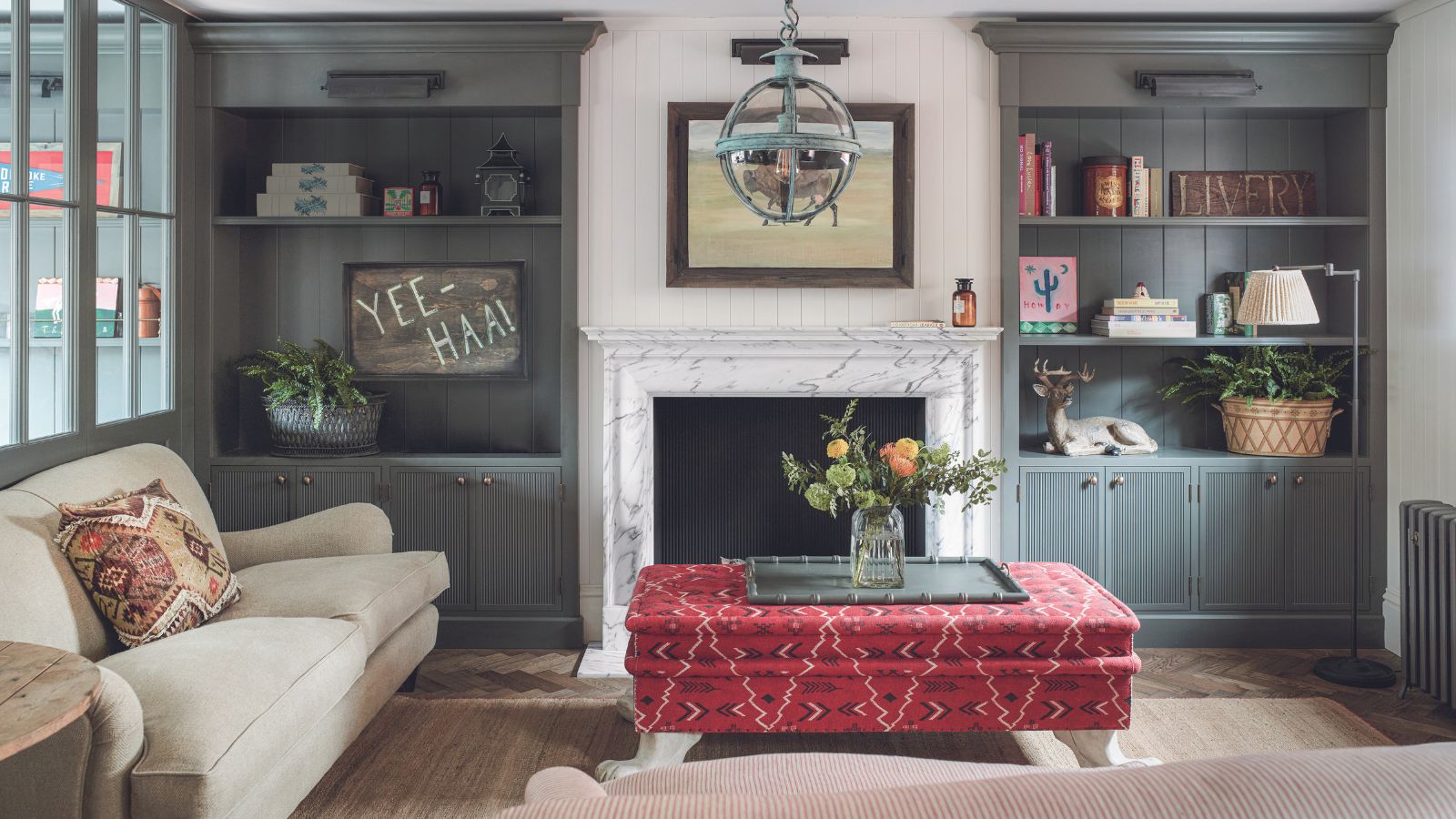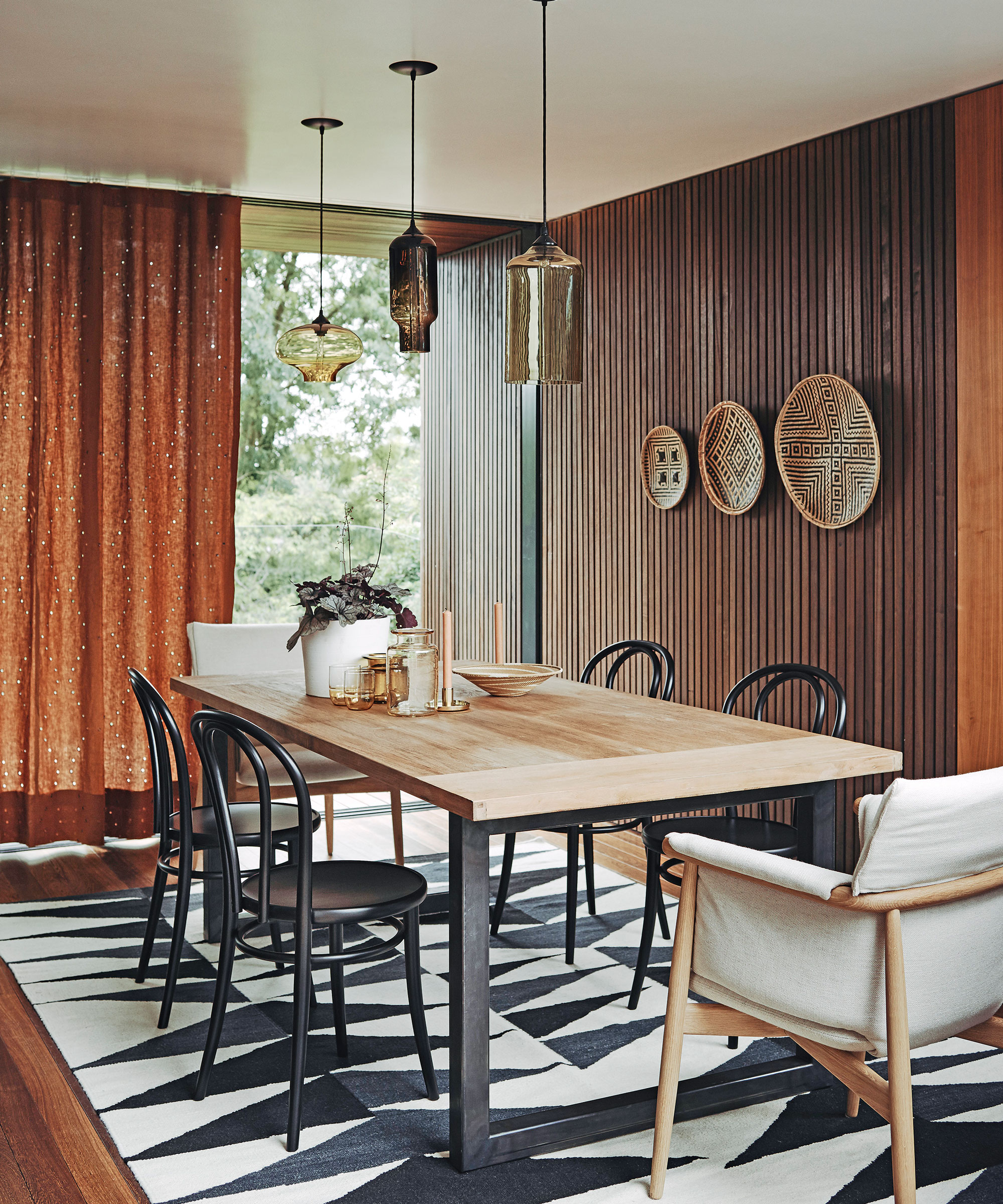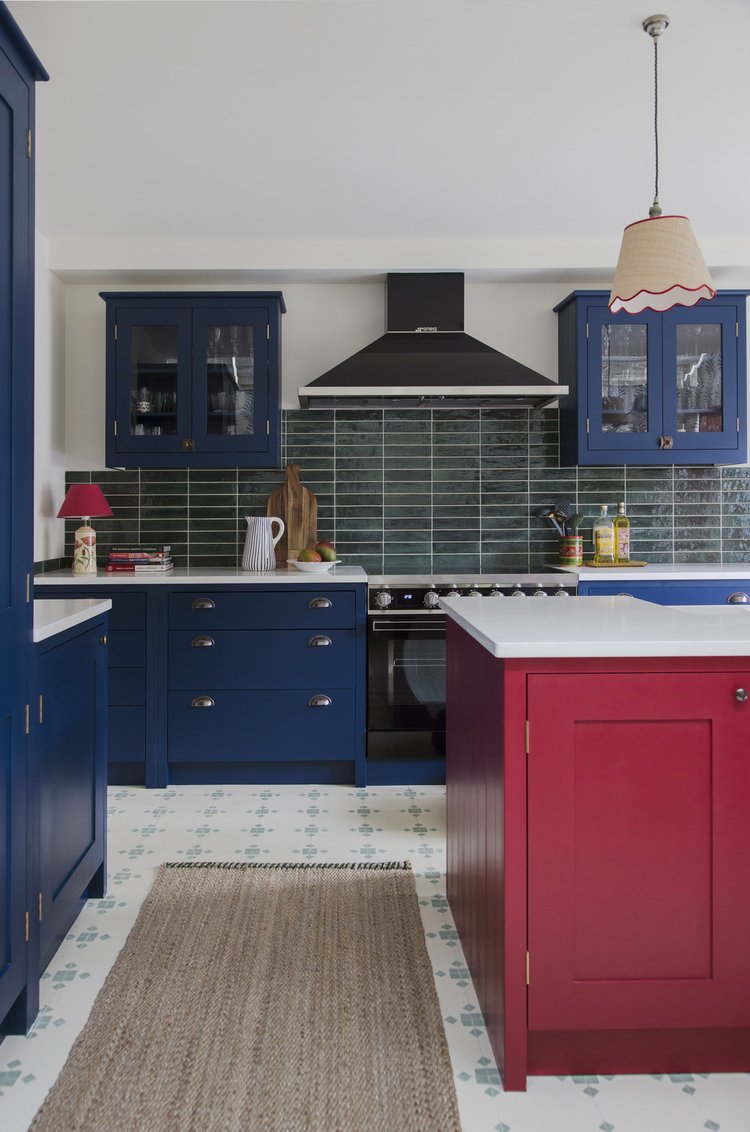Should a rug be darker than the flooring? Interior designers decide on what looks best
Rugs can sometimes be the biggest piece of decor in your room, so getting this right is key


A rug is often considered a piece of decor, a soft furnishing that comes in after you've made all the big decisions about sofa colors, coffee tables shapes and storage solutions. But a rug is actually just as dominant in a room as any piece of furniture. It often takes up more room and definitely more space visually than a couch, a bed, or a dining table.
So deciding on whether a rug should be darker than your flooring is as important a decision as deciding on the colors of any other piece of furniture you bring into the space.
When choosing the perfect rug you of course want to consider size and shape and pattern and color, but you also really need to think about how it's going to look against the flooring underneath. Do you want the rug to pop against the flooring or subtly blend in? Do you need it to provide a lift for the darker floor below or ground a lighter shade?
We asked designers what approach to this flooring idea they think is best. Should an area rug be lighter or darker than the flooring it sits on?
Should a rug be darker than the flooring?

We would like to preface this, as we do all interior design 'rules', there's no absolute right or wrong answer. Your answer as to what combination of rug and floor works best depends on the room, the shades, your personal style, and rug trends that can come and go. Designers will vouch for this too, do what works best in your space and maybe experiment too before you commit. The great thing about rugs is their flexibility, you can pull them up and try them in different spaces, so switch the rugs you have in your home around to see how different combinations work.
'Whether or not your rug is darker than the floor is really a matter of preference about the visual statement you're hoping to make,' explains Kathy Kuo. 'There's really no hard and fast rule here. The primary consideration should be finding a rug that you love, but if adding a strong contrasting element to your space is important to you, consider going either much darker or much lighter than your flooring.'
'A rug can add the perfect finishing touch to your home. It pulls the scheme together and helps to zone a space when working with a larger room. And don’t be afraid to add contrast with your rug by going for a darker color than the flooring.' adds Jenna Choate-James, co-founder of Interior Fox.
Design expertise in your inbox – from inspiring decorating ideas and beautiful celebrity homes to practical gardening advice and shopping round-ups.
'A colorful and patterned rug adds great impact to neutral furniture and walls and works well at hiding a multitude of sins. But a bold design isn’t for everyone. A neutral rug with subtle texture gives a relaxing and calming feel to a scheme.'

Interior design expert Kathy Kuo founded her eponymous home store in 2012 – and it has since gone on to be an e-commerce destination for luxury furniture and decor essentials from a variety of beloved home vendors. Kathy and her store specialize in styles like French Country, Coastal Beach, and Modern Classic while offering interior design services to their clients.

When deciding whether you should go lighter or darker with your rug color the size and also how you use the room are two big factors to consider. Going darker with your rug in a smaller room can really shrink the space. Rug dimensions of the rug become like the 'walls' of the room and can create the illusion the room is much smaller.
However, going lighter with your rug color can really make a small room look bigger. We all know about the space-expanding effects of lighter shades, and a large rug that goes almost to the edges of the room, with all (or most) of the furniture sitting on top can help trick the eye into seeing more floor space than there might actually be. In short, smaller rooms go lighter with the color, larger rooms can handle the contrast.
'I think of this more as a question about contrast,' agrees designer Kati Curtis. 'There's no strict rule that a rug should be darker than the floor. However, a darker rug can add depth and richness to a room, especially if the floor is light in color. It can anchor the room and add a sense of warmth and coziness.'
'On the other hand, a lighter rug against a darker floor can brighten up a space and make it feel larger and more open. The key is to consider contrast, the overall aesthetic, and the color scheme and style when choosing a rug for your space.'
Designer Bethany Adams agrees that, 'A beautifully layered room has many elements, but one of the key ones is contrast. A light colored rug floats above a darker floor, whereas a darker color rug really grounds the furniture grouping on a lighter colored floor. In both cases you're creating an island of beauty within the sea of your main flooring.'

Kati Curtis is an interior designer based in New York City specializing in classic design with global twist. Kati founded Kati Curtis Design in 2005 after 12 years of working with international architecture and engineering firms. She is a Certified Interior Designer (CID), and a Leadership in Energy and Efficient Design Accredited Professional (LEED AP).

Also, consider the room and its functions. In a bedroom or living room, you can probably afford to go lighter with your rug color as these spaces don't see too much traffic. However, for a kitchen rug, that space is going to see a lot of wear and tear and you want to pick a color and a material that can handle it.
So with your kitchen flooring, we would recommend going for a rug that's darker than the floor, or if not darker than the floor a dark shade with a pattern that's going to disguise dirt and mess.
Brooke Copp-Barton who created this beautiful blue kitchen explains, 'I think this depends on the rest of the scheme and how the room is layered. In this case we wanted to bring some softness to the harder edges of the kitchen and the jute runner (and scallop shades!) introduce natural materials that bring warmth and help the kitchen to feel more lived in.'

And don't just focus solely on the color of the floor when deciding on your rug color, look to the rest of the room too. You might find there are more obvious places to pull your inspiration from.
As Gemma Holsgrove, Director at Sims Hilditch says, 'When choosing rugs for interiors, the floor color doesn’t play a huge role in our selection process. Most often the color of a rug depends on the room scheme, where inspiration is pulled from the art or the interior color palette. A rug can also be a work of art in itself and therefore inform the interior, whereas simple plain rugs can serve as a backdrop to furniture.'
FAQs
How do you choose a rug from your floor color?
The first decision is do you want your rug to be a focal point in the room or blend more seamlessly into the space? As we have mentioned, going for a color that's darker will make the rug a real feature in the room so better for larger spaces that can cope with that. Going lighter than your flooring, or for a very a similar shade works better in smaller rooms.
Should a rug ever match the floor color?
This look can work in some cases, so long as you are still getting that contrast from the different textures. For example in a bedroom, you might have a really light wooden flooring or plush cream carpet, you can bring in a bedroom rug in the same light shade but in a sheepskin or a jute, something that's going to highlight the difference between the rug and the flooring below. Otherwise, what's the point?
The takeaway? The color of your rug and deciding whether it should be darker or lighter than the flooring below is very much down to the space - the size, the style, the function. So make the decisions based on those key factors. And try out both options too, pull in rugs from around the rest of your home to see how different shades and combinations are working before you buy anything new.

I am the Head of Interiors at Homes & Gardens. I started off in the world of journalism in fashion and luxury travel and then landed my first interiors role at Real Homes and have been in the world of interior design ever since. Prior to my role at H&G I was the digital editor at Livingetc, from which I took a sabbatical to travel in my self-converted van (not as glamorous as decorating a home, but very satisfying). A year later, and with lots of technical DIY lessons learned I am back to writing and editing, sometimes even from the comfort of my home on wheels.